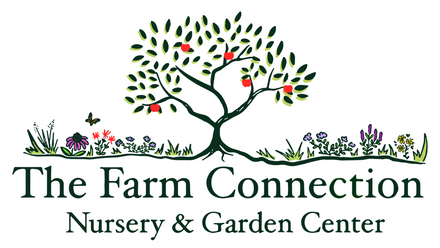Serviceberry, Juneberry/saskatoon, Bare Root
Cold-Hardy Berry Bush with Antioxidant Fruit
Serviceberry, Juneberry/saskatoon, Bare Root - Bare Root / 2-3' is backordered and will ship as soon as it is back in stock.
Couldn't load pickup availability
Delivery and Shipping
Delivery and Shipping
Make sure to thoroughly review our entire "Shipping, Returns, Refunds, and Our Guarantee" page for all relevant details about ordering from our store.
Making a purchase from our store constitutes an agreement to all the conditions outlined in those policies.
We appreciate your support and look forward to being your favorite plant provider!
Subscribe to our newsletter
Sign up for exclusive offers.
Serviceberry, Juneberry / Saskatoon (Amelanchier alnifolia)
Also known as Juneberry or Saskatoon, Amelanchier alnifolia is a hardy, multi-stemmed native shrub valued for its highly nutritious, sweet berries and exceptional adaptability to cold, dry climates. Native to the northern Great Plains, Rocky Mountains, and into Canada, this species forms dense thickets that offer year-round habitat and food for wildlife. Its blueberry-like fruits are rich in antioxidants and have been traditionally used by Indigenous peoples for both food and medicine. A superb choice for edible hedgerows, regenerative grazing systems, and permaculture food forests in northern and western climates.
Key Characteristics
-
Highly nutritious, antioxidant-rich berries
The dark purple fruits resemble blueberries but with a unique, sweet, nutty flavor. High in anthocyanins, fiber, and iron, they are excellent for fresh eating, drying, baking, and preserves. Indigenous communities traditionally dried the berries for winter storage and used them in pemmican. -
Cold-hardy and drought-tolerant
Amelanchier alnifolia is one of the most cold-tolerant serviceberries, thriving in USDA zones 2–7. Its deep root system and tough constitution allow it to succeed in dry, well-drained soils and windy conditions, making it an excellent shrub for prairie restorations and drought-prone sites. -
Supports birds, pollinators, and insect diversity
Blooms in early spring, providing a critical nectar and pollen source for emerging native bees. Its berries are a favorite of songbirds like cedar waxwings, orioles, and robins. Also supports larval stages of several native moth and butterfly species. -
Useful in hedgerows, silvopasture, and erosion control
Its dense growth habit and suckering nature make Saskatoon excellent for creating wildlife hedges, windbreaks, or natural fencing in regenerative agriculture systems. It also stabilizes soil on slopes and disturbed sites, especially in dryland reforestation and prairie-edge buffers. -
Minimal maintenance and long lifespan
Once established, Juneberry is low-maintenance, long-lived, and rarely troubled by pests or diseases. Pruning can help manage size and encourage airflow in humid regions, but it thrives without intervention in most climates.
Product Details
- Native range: Western and northern North America
- Plant life cycle: Perennial, deciduous shrub
- Sun requirements: Full sun to part shade
- Soil requirements: Dry to medium, well-drained
- Mature height: 6–15 ft
- Bloom time: Early spring
- Bloom color: White
- USDA Hardiness Zones: 2–7
Saskatoon serviceberry is a rugged, productive native shrub that brings food, beauty, and biodiversity to northern gardens and landscapes. Perfect for food forests, hedgerows, or as a cold-climate fruit crop.
-
Sun RequirementsFull Sun, Part Sun/Shade
-
Soil RequirementsMedium-Dry, Medium-Wet
-
Bloom ColorWhite
-
Bloom TimeApril, May
-
USDA Hardiness ZonesZone 3, Zone 4, Zone 5, Zone 6, Zone 7
-
Native StatesMaine, Vermont, New Hampshire, New York, Pennsylvania, Ohio, Michigan, Wisconsin, Minnesota, North Dakota, Montana
Payment & Security
Payment methods
Your payment information is processed securely. We do not store credit card details nor have access to your credit card information.




